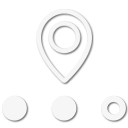Question: What types of communication equipment should I start looking into? I see some references to HAM Radio sets.. Don’t you need a special license for those? I have several sets of hand held radios (GMRS or something like that) that I was given over the years and I’m hearing those are required for group trips. Back in the day we used CB Radios but I see no reference to them.
Is there a thread that breaks it all down for an old dog like me to learn from?
Amateur Radio requires a license as does GMRS. FRS, doesn’t require you to purchase a license and uses the GMRS frequencies (channels) at lower power.
CB isn’t used much any more, but that might change now that the FCC has allowed FM service on the CB channels. We as overlanders don’t use CB much because it is a very short range radio with limited power output compared to GMRS and Amateur Radio.
Amateur Radio is the preferred method of communication because it gives you the ability to have short range communication for convoys and long range communication in the event you need to call out for help.
FRS has a 1/4 mile to mile range, great for spotter to rig coms, but sucks for rig to rig coms in large groups. GMRS has a range of about 25-50 miles and the ability to connect to repeaters (if there is a public repeater in the area) allowing up to 75-100 miles, 2m Amature band can travel 50-100 miles without a repeater under good conditions but typically 50-75 miles in the mountains. 2m/70cm can also use repeaters (which are generally open for public amateur radio use) and give the ability to transmit data up to 250 miles. And then if you upgrade your license to general you have access to all of the HF bands and can communicate around the globe reliably depending upon time of day and what frequencies you are able to use.
I remember when I was in the same conundrum debating what radio service I would go with. I dug out my old CB, made a base station antenna and turned on my radio for several months. I never heard anything but static. I then looked for repeaters in my area on GMRS, found only one within a 200 mile radius, and it’s privately owned, so that’s was out. I then looked into Amateur radio. I found I had 8 repeaters within 30 miles that are all open to the public, and two of which serve emergency services as their primary use (meaning that 2 repeaters are directly tied into the state and county emergency management team and monitored 24/7 for emergency traffic). I then sent an email to one of the local amateur radio clubs to see how active they are… come to find out there are 17 nets total running 7 days a week on 14 different repeaters. And there are more than 300 check ins per day on those nets. So that means there are at least 300 people with their ears to a radio throughout the day. Now figure that out of those 300 people, 25% have thier General License or higher that’s 75 people monitoring the HF frequencies. Each region has its own set of HF frequencies that are known for emergency use. Here in Region 7 we use 3.950.00 through 3.960.00 for ecom. So out of the 75 people, 15 are directly tied into state or county resources and can help send the required aid.
So obviously I installed my CB and have never looked back, not caring to ever make a contact and only needing it for one meetup… ohh wait, no I didn’t, I got my General license, and am studying for my Amateur Extra. I run a 100 watt all band all mode radio capable of Voice, and Data Coms, along with a 100 watt 2m radio set up only for digital communication via packet email and APRS . I can talk to people within my group, within the county in which I’m travel through, or if need be to an emergency service center. I can send an email to my wife when I’m miles from cell service, or send a text message to the group leader. No other radio service provides this kind of flexibility.
BUT… If everyone is using CB around you, go with CB. If everyone is using GMRS, go with that…. If you are going solo, or the group is using amateur radio, go with amateur radio.











